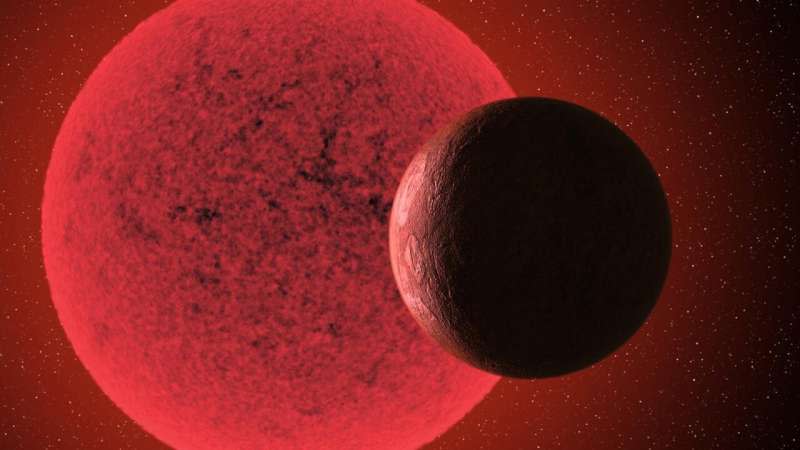Scientists discover new super-Earth orbiting a distant red dwarf

Scientists have discovered a new super-Earth orbiting around a star 36 light years from our home planet.
The newly-discovered world has a mass three times greater than that the Earth, orbiting the GJ 740 star every 2.4 days.
GJ 740 is much cooler than the sun, and has a much smaller mass. Temperatures on its surface reach between 2400 and 3700 Kelvin, which is over 2000 degrees cooler than the Sun, and is between 0.08 and 0.45 of its size.
Cooler stars like this one are ideal in the search for new planets, with scientists estimating that each of these stars have an average of 2.5 planets with orbits under 200 days circling them.
"This is the planet with the second shortest orbital period around this type of star. The mass and the period suggest a rocky planet, with a radius of around 1.4 Earth radii, which could be confirmed in future observations with the TESS satellite," explains Borja Toledo Padrón, a doctoral student at theInstituto de Astrofísica de Canarias (IAC) and the first author of the article - published in Astronomy & Astrophysics.
"The search for new exoplanets around cool stars is driven by the smaller difference between the planet’s mass and the star’s mass compared with stars in warmer spectral classes (which facilitates the detection of the planets’ signals), as well as the large number of this type of stars in our Galaxy," Padrón adds.
The data gathered by the researchers also indicates the existence of a second planet near to this one, approximately the size of Saturn and orbiting the star every nine years.
However, the signals scientists are receiving could be caused by the magnetic cycle of the star, so more information is needed before astronomers can confirm its presence.
"The main difficulty of this method is related to the intense magnetic activity of this type of stars, which can produce spectroscopic signals very similar to those due to an exoplanet," says co-author and researcher Jonay I. González Hernández.
Read More
CNN anchor cries as she reads co-worker’s tribute to son who died of cancer
Dogecoin price ‘heading to 69 cents’ on 4/20 for #DogeDay420
Nasa has made the first ever powered flight on another planet

 Yahoo Finance
Yahoo Finance 